Amazing Companion Plants For Angelonia
Amazing Companion Plants for Angelonia
Angelonia is a beautiful and versatile plant that can add color and interest to any garden. It is also relatively easy to care for, making it a good choice for even novice gardeners. One of the best things about angelonia is that it can be paired with a wide variety of other plants to create stunning and complementary displays.
In this blog post, we will discuss some of the best companion plants for angelonia. We will also provide some tips on how to choose the right plants for your specific needs and garden.
Why use companion planting?
Companion planting is a gardening practice that involves planting certain types of plants together in order to benefit each other. There are many different benefits to companion planting, including:
- Attracting beneficial insects: Some plants, such as marigolds and nasturtiums, attract beneficial insects such as ladybugs and lacewings. These insects help to control pests in your garden.
- Distracting pests: Other plants, such as decoy plants, can distract pests away from your more valuable plants. For example, planting marigolds near tomatoes can help to deter tomato hornworms.
- Improving soil fertility: Some plants, such as legumes, fix nitrogen in the soil. This can help to improve the fertility of your soil and reduce the need for fertilizer.
- Providing shade or windbreak: Some plants can provide shade or windbreak for other plants. This can help to protect more delicate plants from the elements.
Choosing companion plants for angelonia
When choosing companion plants for angelonia, there are a few things to keep in mind. First, angelonia prefers full sun, so make sure to choose plants that also require full sun. Second, angelonia is not very drought tolerant, so choose plants that have similar water needs. Finally, consider the overall look and feel you want to create in your garden when choosing companion plants.
Here are some of the best companion plants for angelonia:
- Marigolds: Marigolds are a classic companion plant for angelonia. They attract beneficial insects and help to deter pests. They also come in a variety of colors, so you can choose marigolds that complement the color of your angelonia plants.
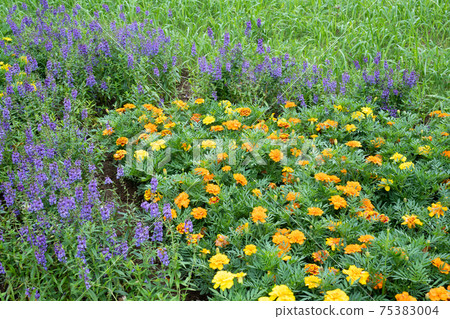
- Zinnia: Zinnias are another great companion plant for angelonia. They come in a wide variety of colors and bloom all summer long. Zinnias also attract beneficial insects and help to deter pests.

- Petunias: Petunias are a popular choice for container gardens and can be planted with angelonia for a colorful display. Petunias come in a variety of colors and trailing varieties can be used to help fill in empty spaces in your garden.
- Verbena: Verbena is a low-maintenance plant that blooms all summer long. It comes in a variety of colors and can be used to add height and interest to your garden. Verbena also attracts beneficial insects and helps to deter pests.
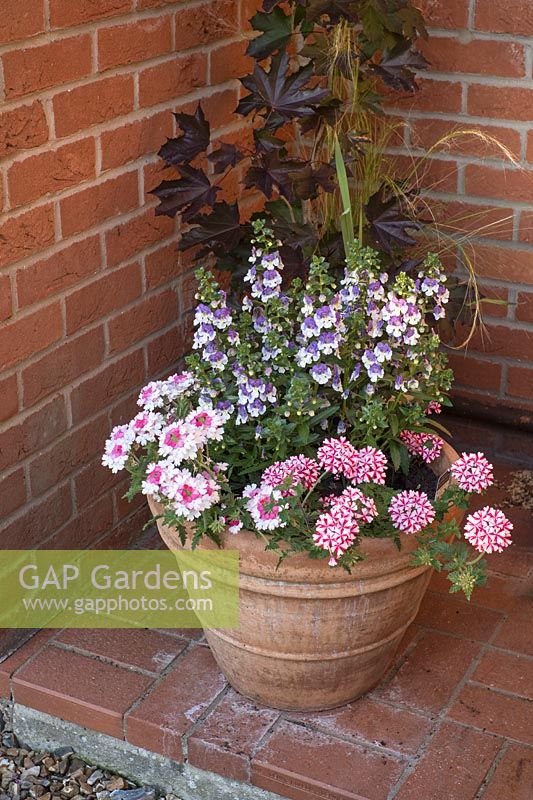
- Dusty miller: Dusty miller is a silver-leaved plant that adds contrast to the bright colors of angelonia. It is drought tolerant and does not require a lot of care. Dusty miller also attracts beneficial insects and helps to deter pests.

- Salvia: Salvia is a tall, upright plant that blooms all summer long. It comes in a variety of colors and attracts beneficial insects. Salvia can help to deter pests and can also be used to create a privacy screen in your garden.
- Lantana: Lantana is a tropical plant that can be grown in warm climates. It comes in a variety of colors and blooms all summer long. Lantana attracts beneficial insects and helps to deter pests. It can also be used to create a colorful border in your garden.
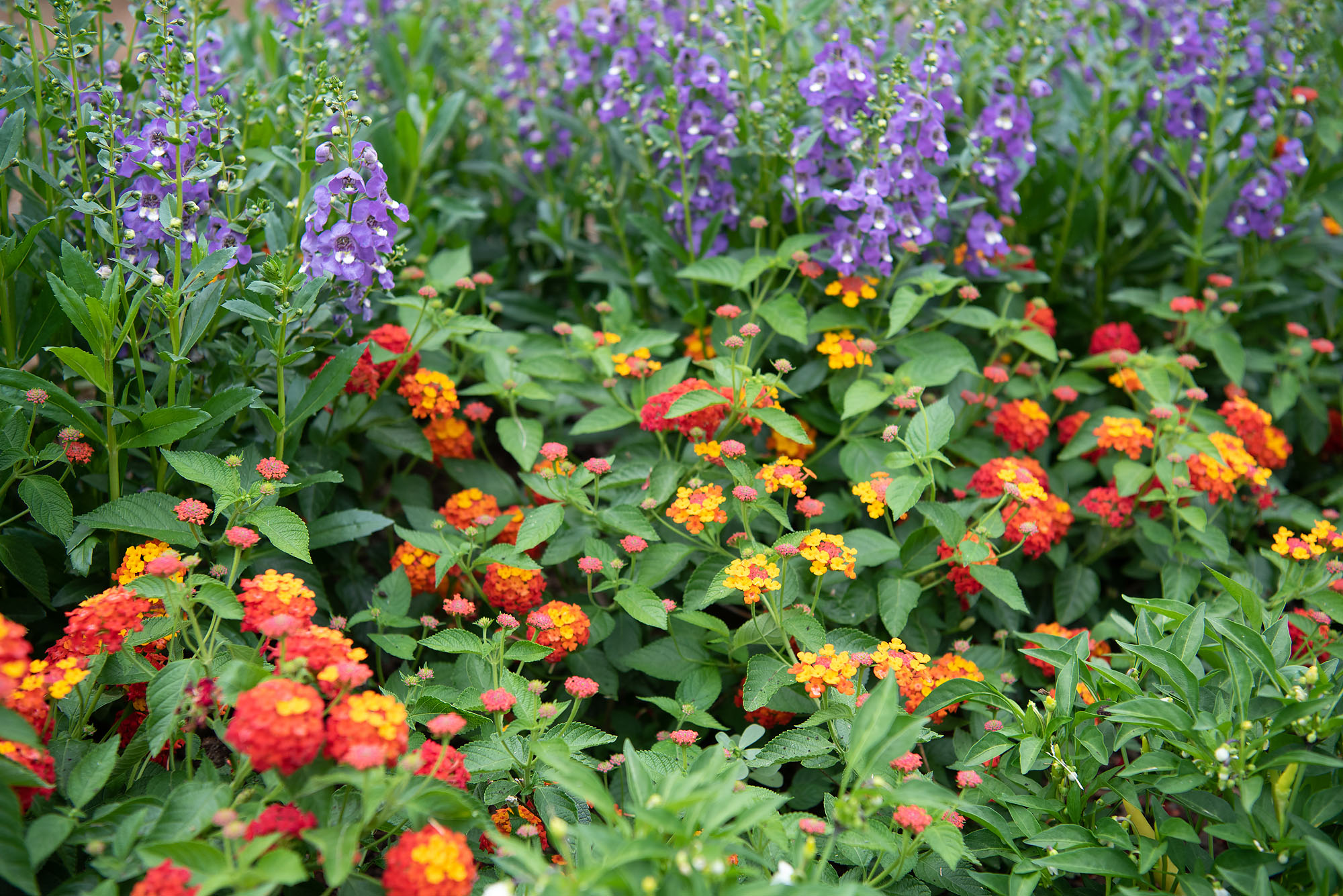
- Geraniums: Geraniums are a popular choice for hanging baskets and containers. They come in a variety of colors and bloom all summer long. Geraniums are also relatively drought tolerant and do not require a lot of care.

Conclusion
Angelonia is a beautiful and versatile plant that can add color and interest to any garden. By choosing the right companion plants, you can create stunning and complementary displays that will attract beneficial insects and help to deter pests. With a little planning, you can create a beautiful and thriving garden that is full of life.
Angelonia is a beautiful, sun-loving annual that blooms from summer to frost. It's a great choice for adding color to your garden, but it's also important to choose the right companion plants. Some good companion plants for angelonia include:
- Salvia: Both angelonia and salvia have upright, spiky flowers that create a complementary effect when planted together. Salvia comes in various colors, which can be used to create striking color combinations. Gardenia Inspiration
- Echinacea: The daisy-like flowers of echinacea pair beautifully with the spiky blooms of angelonia, creating a contrast in flower shapes while attracting pollinators. Gardenia Inspiration
- Petunia: Petunias add vibrant colors and a more rounded, trailing growth habit that contrasts nicely with the upright structure of angelonia. Gardenia Inspiration
- Zinnia: Zinnias are another great choice for companion plants for angelonia. They come in a wide variety of colors, and they're both heat- and drought-tolerant. Gardenia Inspiration
- Marigold: Marigolds are not only beautiful, but they also help to repel pests. They're a great choice for companion plants for angelonia if you're looking for a way to keep your plants healthy. Gardenia Inspiration
For more information about angelonia companion plants, please visit Gardenia Inspiration.
FAQ of angelonia companion plants
Question 1: What are some good companion plants for angelonia?
Answer: Angelonia is a versatile plant that can be paired with a variety of other plants. Some good companion plants for angelonia include:
- Petunias: Petunias and angelonia have similar growing requirements and bloom at the same time, so they make great companions. They also have different flower shapes and colors, which can add visual interest to your garden.
- Verbena: Verbena and angelonia are both heat-tolerant plants that attract butterflies and hummingbirds. They also have similar flower colors, so they can be planted together to create a continuous swath of color.

- Calibrachoa: Calibrachoa, also known as million bells, is a small, trailing plant that is perfect for adding color to hanging baskets and containers. It has similar growing requirements to angelonia and blooms at the same time.

- Dusty Miller: Dusty Miller is a silver-leaved plant that adds contrast to the bright colors of angelonia. It is also drought-tolerant and can help to suppress weeds.

- Scaevola: Scaevola is a low-growing plant with blue or purple flowers. It is heat-tolerant and drought-tolerant, making it a good companion plant for angelonia in hot, dry climates.

Question 2: What are some plants that should not be planted with angelonia?
Answer: There are a few plants that should not be planted with angelonia, as they can compete for water and nutrients or attract pests and diseases. These plants include:
- Marigolds: Marigolds can produce a chemical that can stunt the growth of angelonia.

- Chrysanthemums: Chrysanthemums can attract aphids, which can also infest angelonia plants.
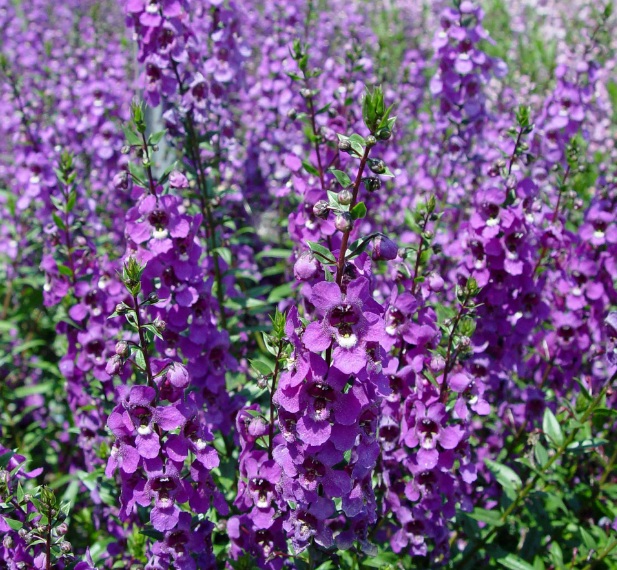
- Fuchsias: Fuchsias are susceptible to the same diseases as angelonia, so planting them together can increase the risk of infection.
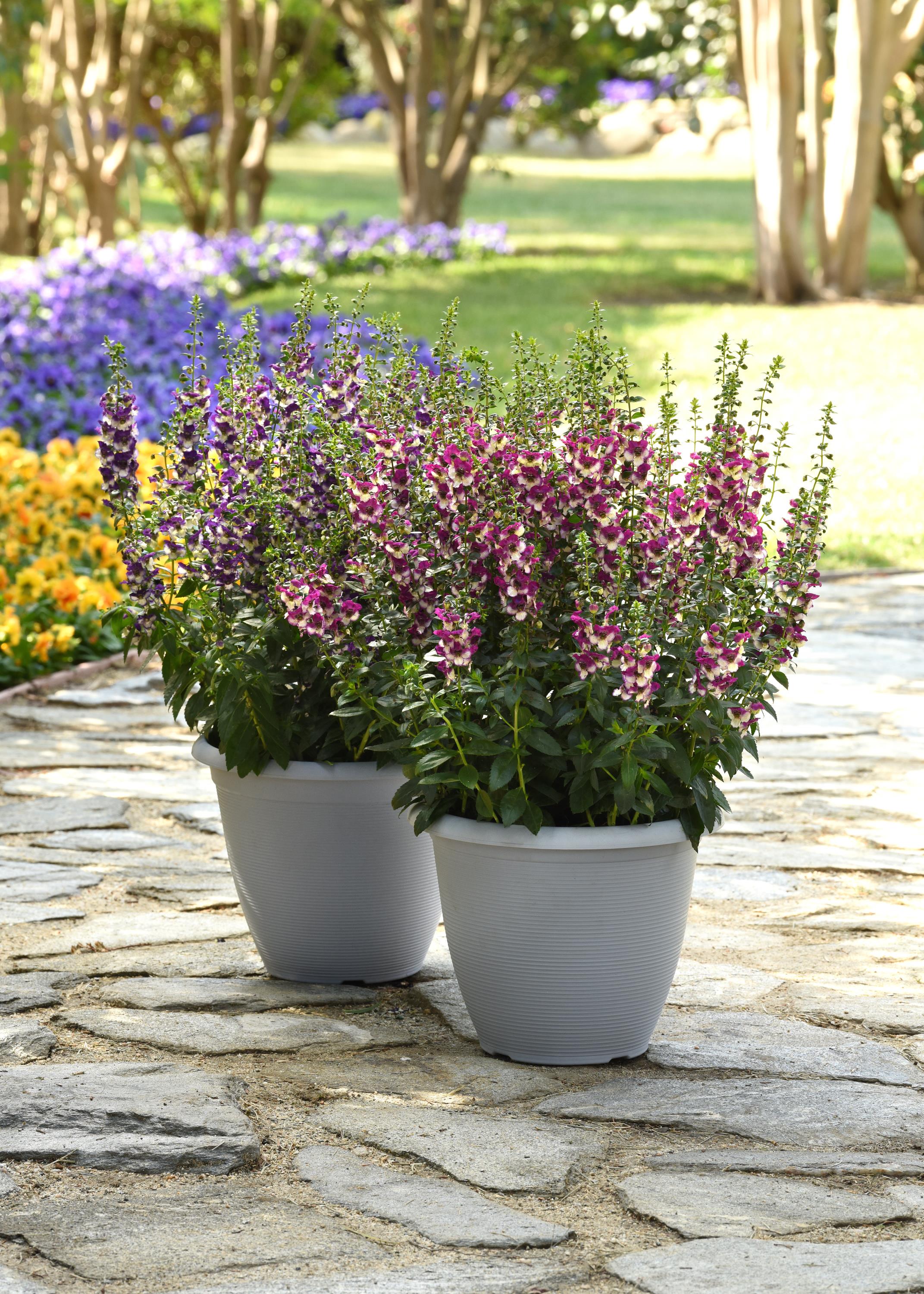
- Geraniums: Geraniums can attract spider mites, which can also infest angelonia plants.

- Coleus: Coleus can attract slugs and snails, which can also damage angelonia plants.

Question 3: How far apart should angelonia plants be planted?
Answer: Angelonia plants should be planted about 12-18 inches apart. This will give them enough space to grow and spread.
Question 4: When should angelonia plants be watered?
Answer: Angelonia plants need to be watered regularly, especially during hot, dry weather. Water them deeply so that the water reaches the roots. Allow the soil to dry out slightly between waterings.
Question 5: How can I deadhead angelonia plants?
Answer: Deadheading angelonia plants will help to encourage new blooms. To deadhead, simply pinch off the spent blooms at the base of the flower. You can also cut back the entire plant by about one-third to encourage new growth.
Image of angelonia companion plants
- Angelonia and petunias: These two plants have similar light and water requirements, so they make good companions in a container or flower bed. They also bloom for a long period of time, so you'll enjoy their colorful flowers all summer long.
- Angelonia and verbena: These two plants also have similar growing conditions, and they complement each other's colors well. Verbena comes in a variety of colors, so you can choose ones that will blend well with your angelonia plants.

- Angelonia and marigolds: Marigolds are another good choice for companion plants for angelonia. They both attract butterflies and other pollinators, and they can help to deter pests.

- Angelonia and dusty miller: Dusty miller is a low-growing plant that adds texture and interest to a flower bed. It also helps to suppress weeds, which can free up your time to focus on your angelonia plants.
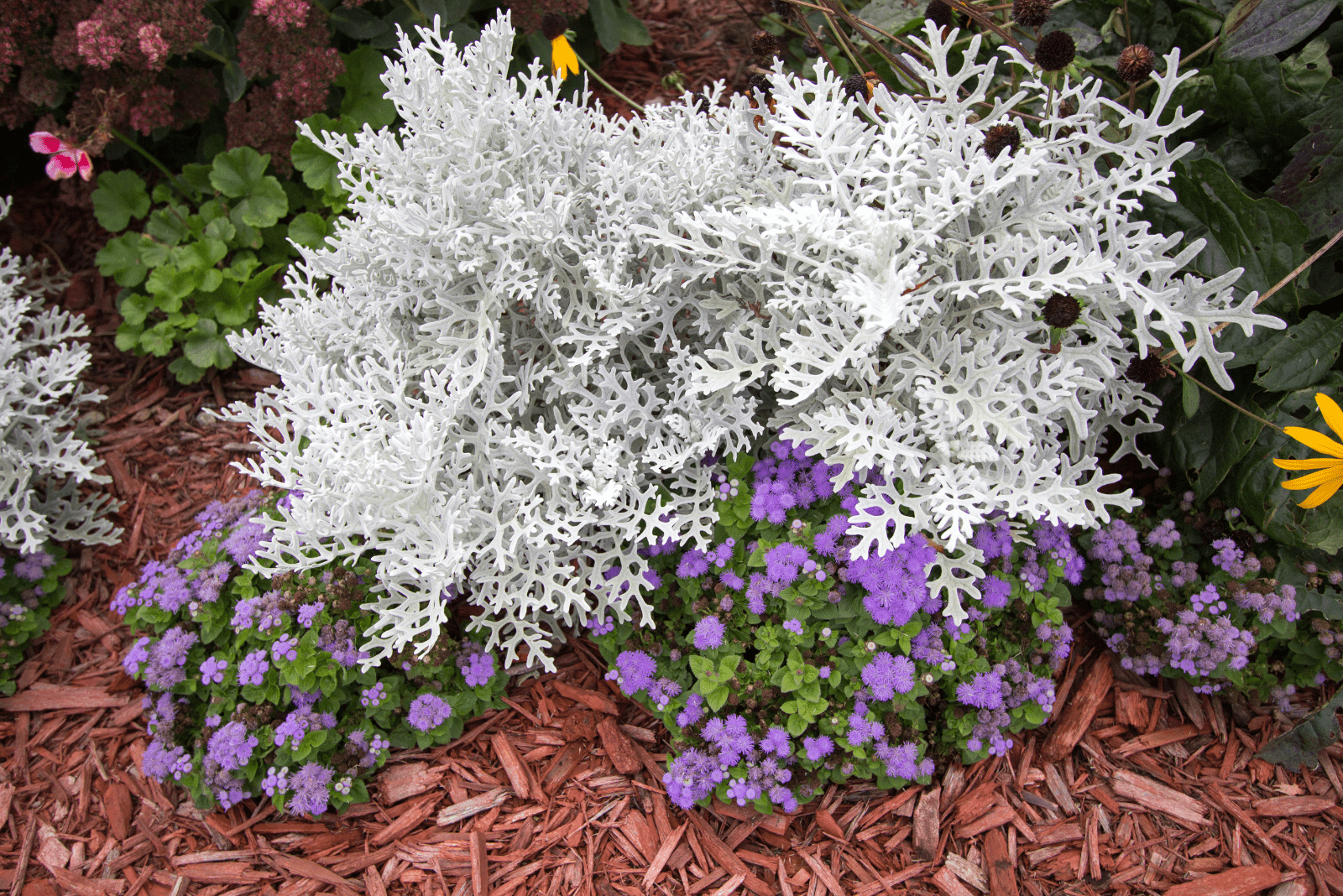
- Angelonia and pentas: Pentas are another type of flowering plant that blooms all summer long. They come in a variety of colors, so you can choose ones that will complement your angelonia plants.


Post a Comment for " Amazing Companion Plants For Angelonia"